|
 |
|
 |
|
|
|
It had been a long tumultuous journey from
Ur, the place of his birth, a glistening
capital city of culture, temples and riches
with perhaps as many as 100,000 residents
located in modern-day Iraq to his final
resting place in a cave in Hebron in the
land of Canaan. |
|
|
|
During the course of his life he had waited
many years for his beloved wife Sarah to
conceive. Then he offered their only
son as a sacrifice at Mount Moriah. He
quarreled with his neighbors over water,
rescued his nephew Lot who had been taken
hostage beyond Damascus, deceived the
Pharaoh of Egypt by presenting Sarah as his
sister and demonstrated his mastery of
Middle-Eastern bargaining to secure the cave
of the Machpelah, the field it was in and
all the trees in the field as his titled
possession in the land of Canaan.
|
|
|
|
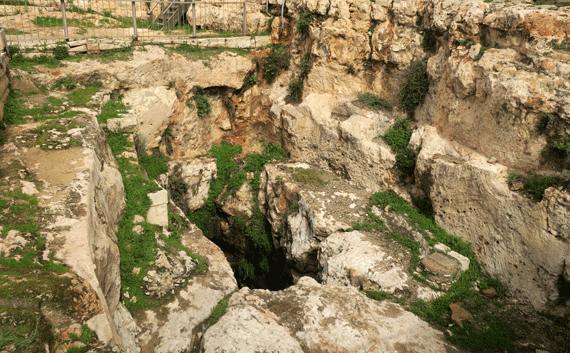 |
|
Photo: Gila
Yudkin |
|
Outside extension of the
Cave of the Machpelah where Abraham is
buried |
|
|
|
Along the way he emerged as a man of
profound faith and forefather of the
descendents of Ishmael and Isaac. As
the Lord promised, "I will make your
descendents as the dust of the earth, so
that if a man could number the dust of the
earth, then your descendants also could be
numbered. Arise, walk in the land
through its length and its width, for I give
it to you." (Genesis 13:16-17) |
|
|
|
A great place to reflect on Abraham's
curriculum vitae is by his chosen burial
spot in Hebron, the Tomb of the Patriarchs
in the Cave of the Machpelah. There
are so many possibilities to discuss and
ponder. Among them: Did Abraham regret
possibly foreshortening Sarah's lifespan by
taking Isaac on that nerve-wracking journey
to Mount Moriah? Did he regret passing
Sarah off as his sister to Pharaoh?
What was the tone of the conversation
between Isaac and Ishmael as they met at
their father's burial for the first time
since Ishmael had been banished? |
|
|
|
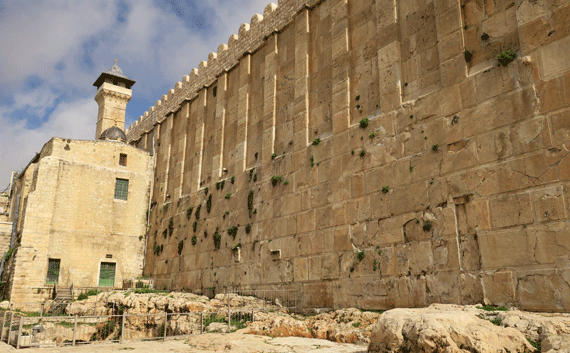 |
|
Photo: Gila
Yudkin |
|
2000 years ago Herod the
Great enclosed the Tomb of the Patriarchs
and Matriarchs |
|
|
Last week was my first visit to Hebron since
1999. In the 1980s I visited the Cave
of the Machpelah nearly every week, gazing
at the 2000-year-old Herodion superstructure
enclosing the burial cave, admiring the
Muslim artwork in the mosque featuring the
tomb monuments of Isaac and Rebekah and
trying to imagine the intrepid 12-year-old Michal surreptitiously being lowered by
ropes down below into
the burial corridor in 1968. |
|
|
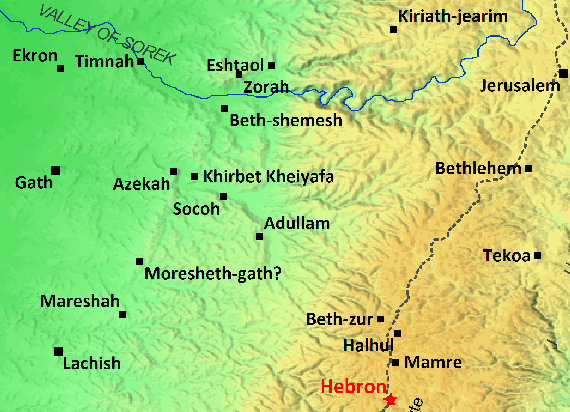 |
|
Copyright
2018 by Gila Yudkin |
|
Map showing Hebron 31 km
(19 miles) south of Jerusalem |
|
|
|
When I excitedly took out my notes from my
guide course forty years ago and from my
first years of guiding to prepare, I found I
remembered every single detail! Proof
of the extraordinary impression the site
engraved in my memory.
|
|
|
|
The outer Herodion enclosure is nearly an
exact miniature of the Herodion Temple
Mount reduced in scale to 12%. But
what's amazing is that it is preserved to
its original height. Imagine seeing a
religious building from the time of Jesus to
its original height intact! |
|
|
|
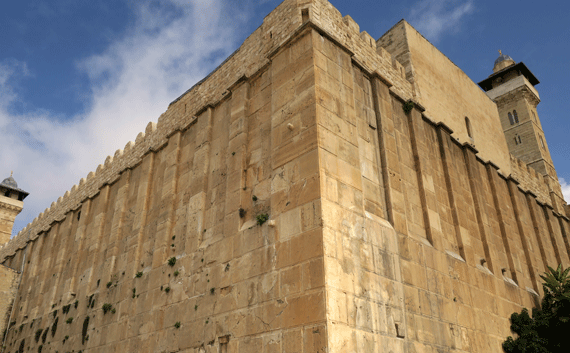 |
|
Photo: Gila
Yudkin |
|
This Herodion building is
preserved to its original height -- from
2000 years ago! |
|
|
|
Outside it's fun to read the description of
the circuitous negotiation between Abraham
and Ephron documented in Genesis 23.
We can consider the ridiculously high price
Abraham agreed to pay for the property just
because he wanted/needed the deed of title,
even though he was "entitled." (See
the promise in Genesis 13.) |
|
|
|
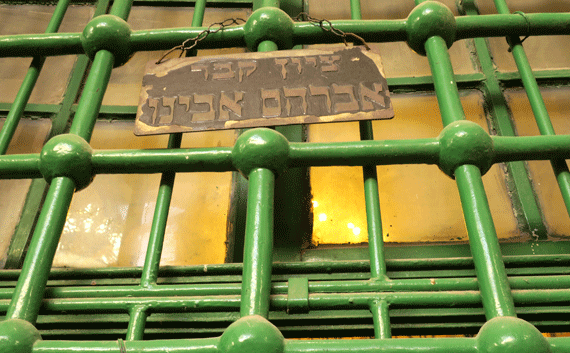 |
|
Photo: Gila
Yudkin |
|
Sign designates "Tomb of
Our Forefather Abraham" |
|
|
|
Here in the Cave of the Machpelah in Hebron
Abraham buried his beloved wife Sarah.
When he passed, his sons Isaac and Ishmael
buried him in the cave which he had
purchased publicly from Ephron the Hittite.
|
|
|
Two generations later, Jacob blessed his
twelve sons and told them, "I am to be
gathered to my people; bury me with my
fathers in the cave that is in the field of
Ephron the Hittite, in the cave that is in
the field of Machpelah, which is before
Mamre in the land of Canaan, which Abraham
bought with the field of Ephron the Hittite
as a possession for a burial place.
There they buried Abraham and Sarah his
wife, there they buried Isaac and Rebekah
his wife and there I buried Leah."
(Genesis 49:29-32) |
|
|
|
Come to Hebron with me for an awesome visit
to an authentic biblical site which is only
rarely included on your standard itinerary.
The reason is that occasionally there are
rocks thrown at the bus at one or two spots
along the road to Hebron. Indeed my bus
got two rocks with one window broken from
the outside, but there were no injuries. So
I can say that this visit is not for the
faint of heart However, if Abraham's faith
journey relates to your own spiritual
journey, then I promise the visit will be
remarkable and memorable. |
|
|
Copyright March 2018 Gila Yudkin. Permission
needed for any reuse. |
|
|
Gila Yudkin,
a Connecticut-born Yankee living in King
David's court, has been guiding nearly as
long as David reigned over Israel, first
from Hebron and then from Jerusalem.
Her favorite sites are the authentic ones
where her insights illuminate
the biblical text. She loves
showing new discoveries at the old dusty
somewhat-forgotten and under-visited sites.
Her tours are a mix of archeology,
geography, Bible and fun. |
|
|
|
|
Abraham bought the Cave of the Machpelah as
a burial spot for his wife Sarah for 400
shekels of silver. David bought the
Temple Mount for a mere fifty shekels of
silver. For an explanation about who "owns"
possession of the Temple Mount today, see
"Ask
Gila about Excavations on the Temple Mount." |
|
|
Tour the Temple
Mount in the
company of Abraham and Isaac, David and Solomon,
Jesus and the disciples, the angel Gabriel and
Mohammed. Meet many other luminaries,
both real and legendary.
Gila's Temple Mount tour
is now also available as a written
24-page PDF with a
Temple Mount plan,
guidelines for passing the security check
and ten recommended reads on the
Temple Mount from Gila's bookshelves.
|
|
In addition to Hebron and Mount Moriah, the
site most closely associated with Abraham is
the well at Beersheba. In the ancient
days the city well was the equivalent of a
"singles' bar," the only place a young woman
could meet a man not of her family.
For more, read "Let's
meet at the well of Beersheba." |
| |
|
More Biblical Archeology: |
|
|
|
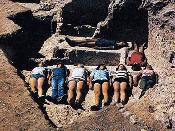 |
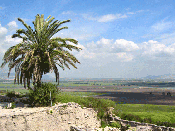 |
 |
|
Priestly benediction |
Armageddon |
Herod's Tomb |
|
|
|
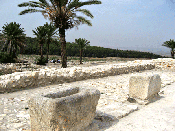 |
 |
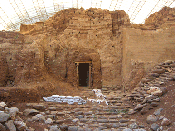 |
| Solomon's
Stables / Megiddo |
Joshua / Hazor |
Abraham at Dan |

